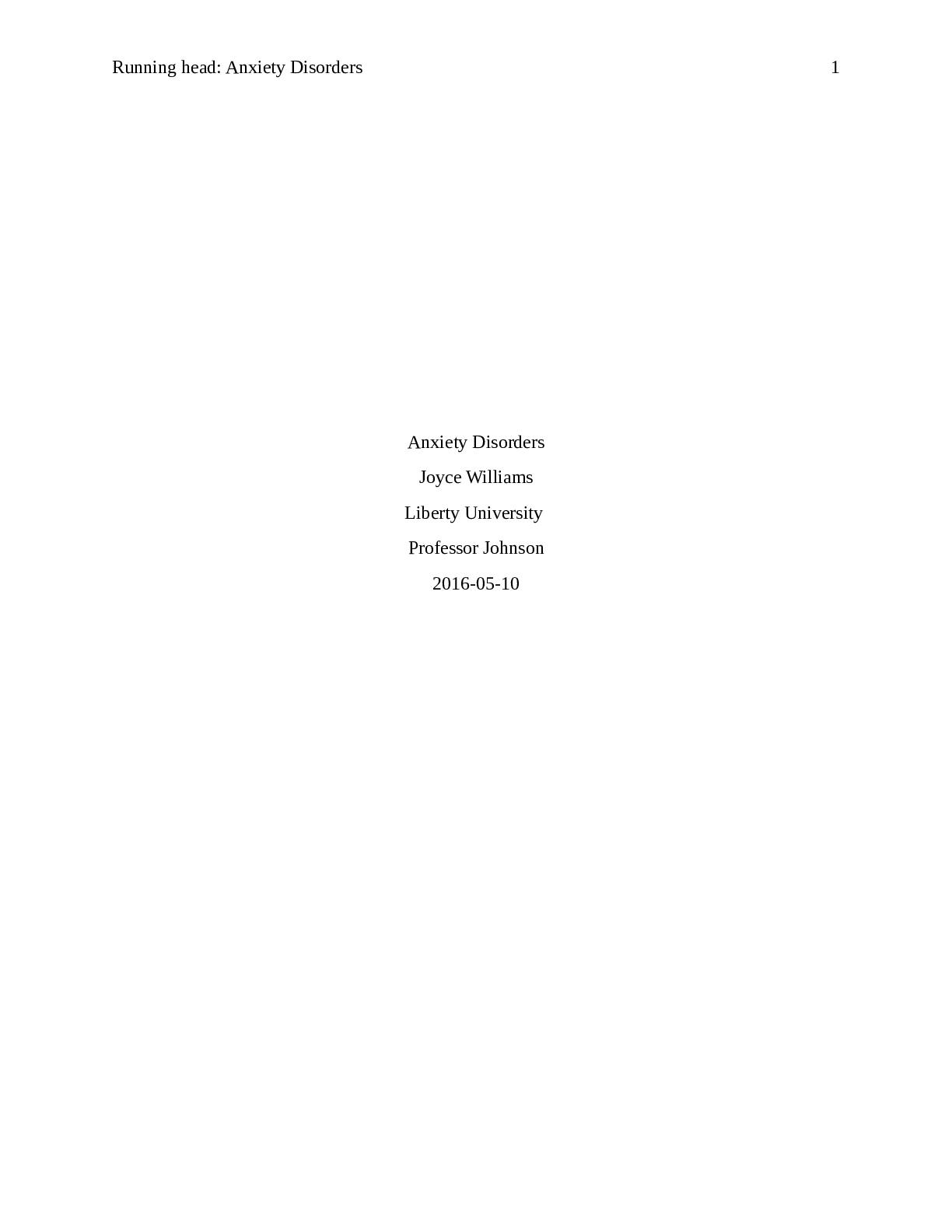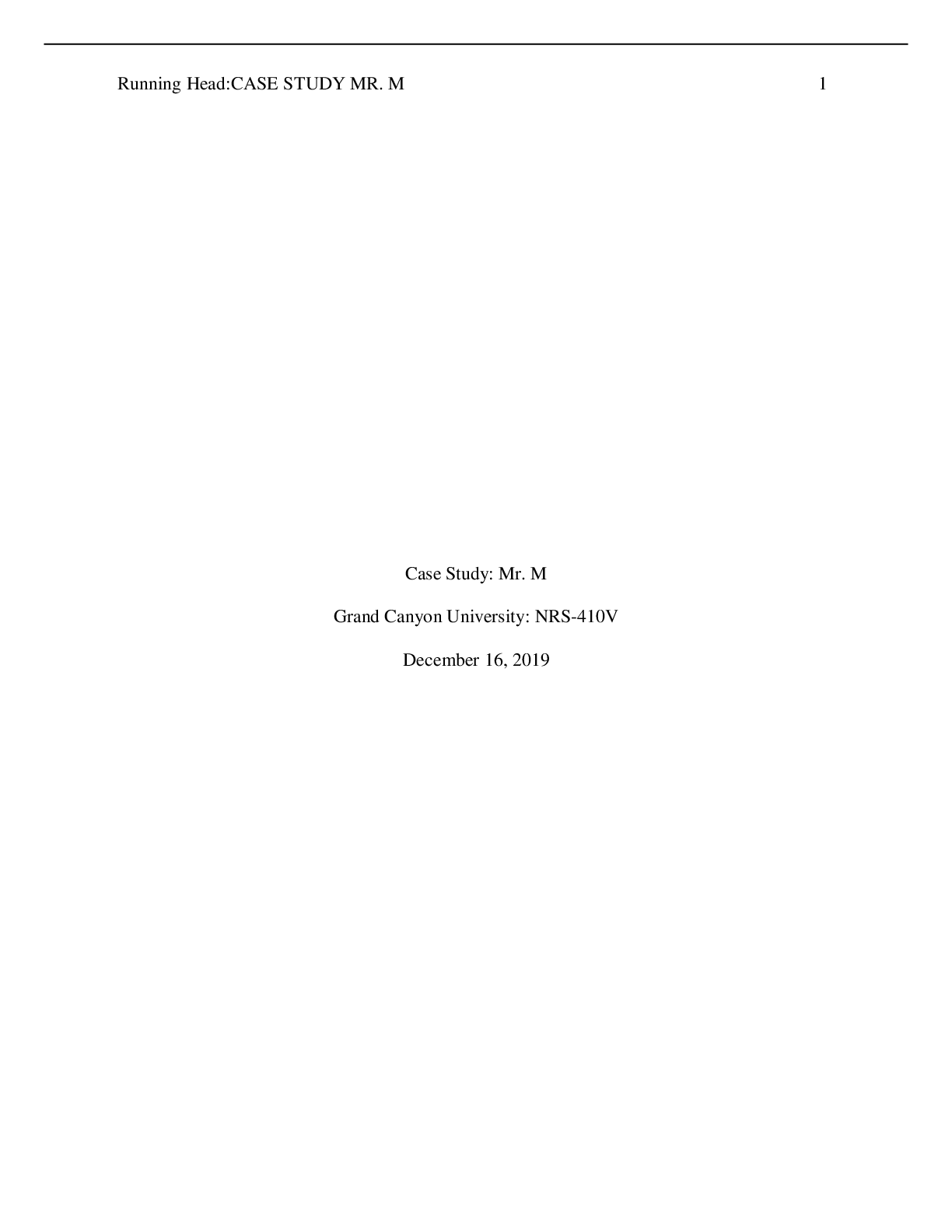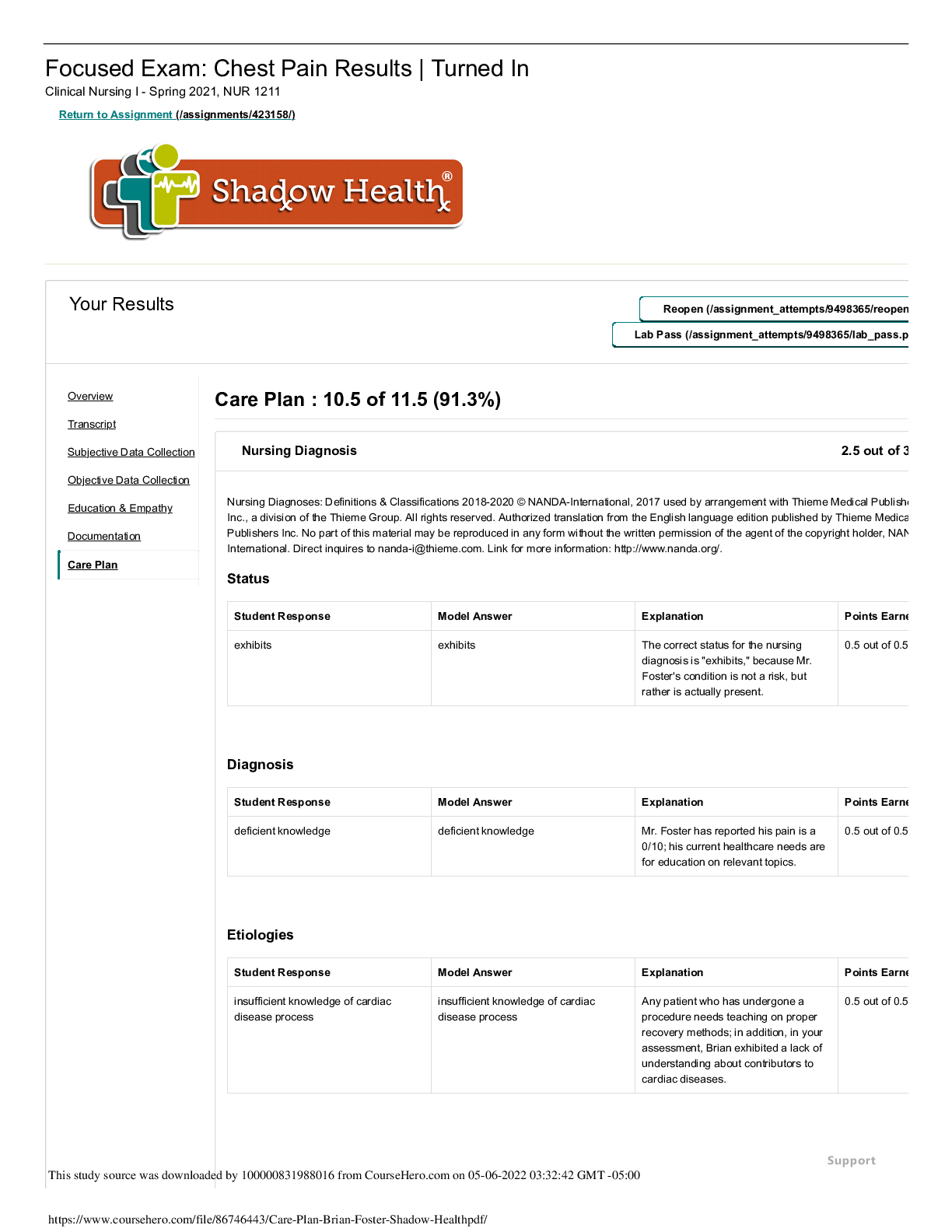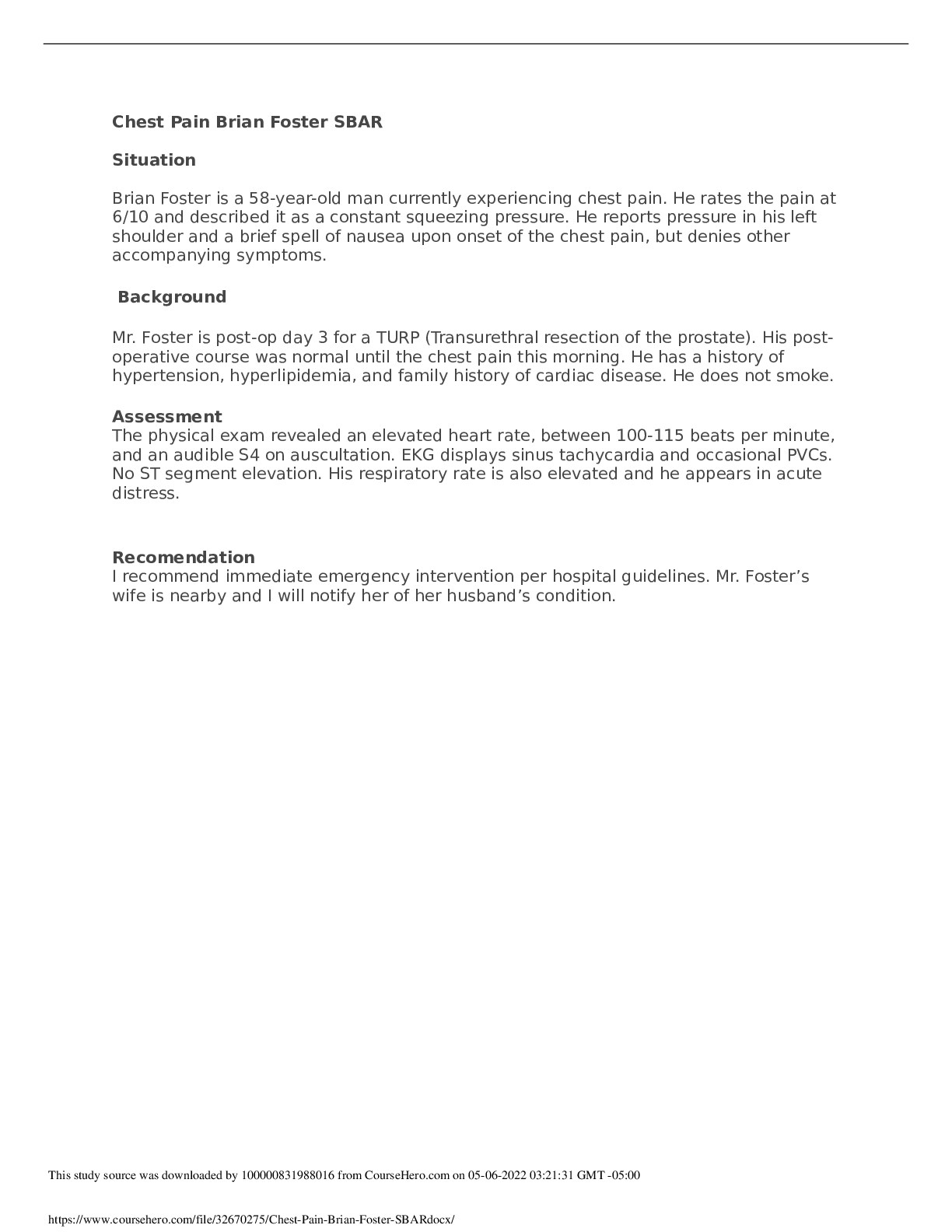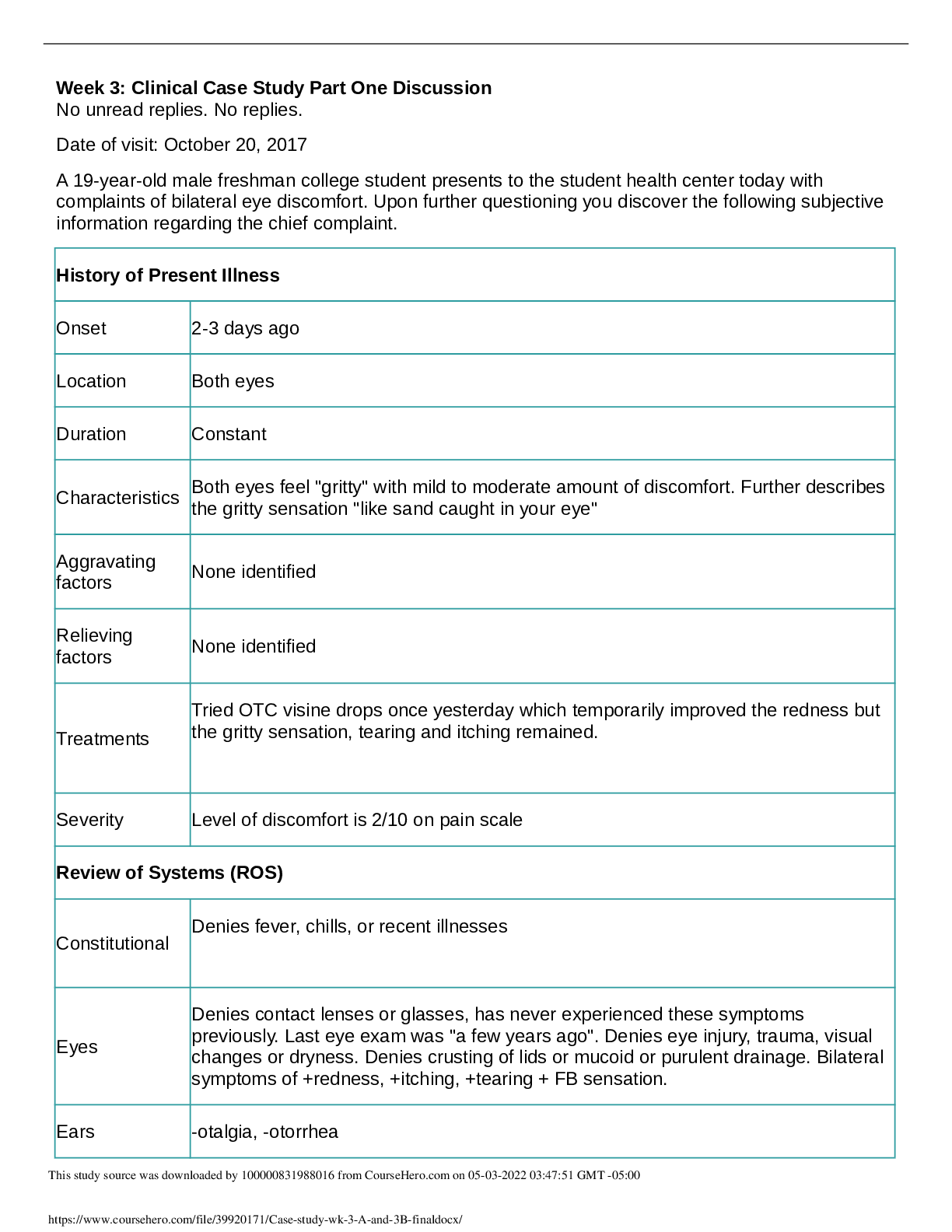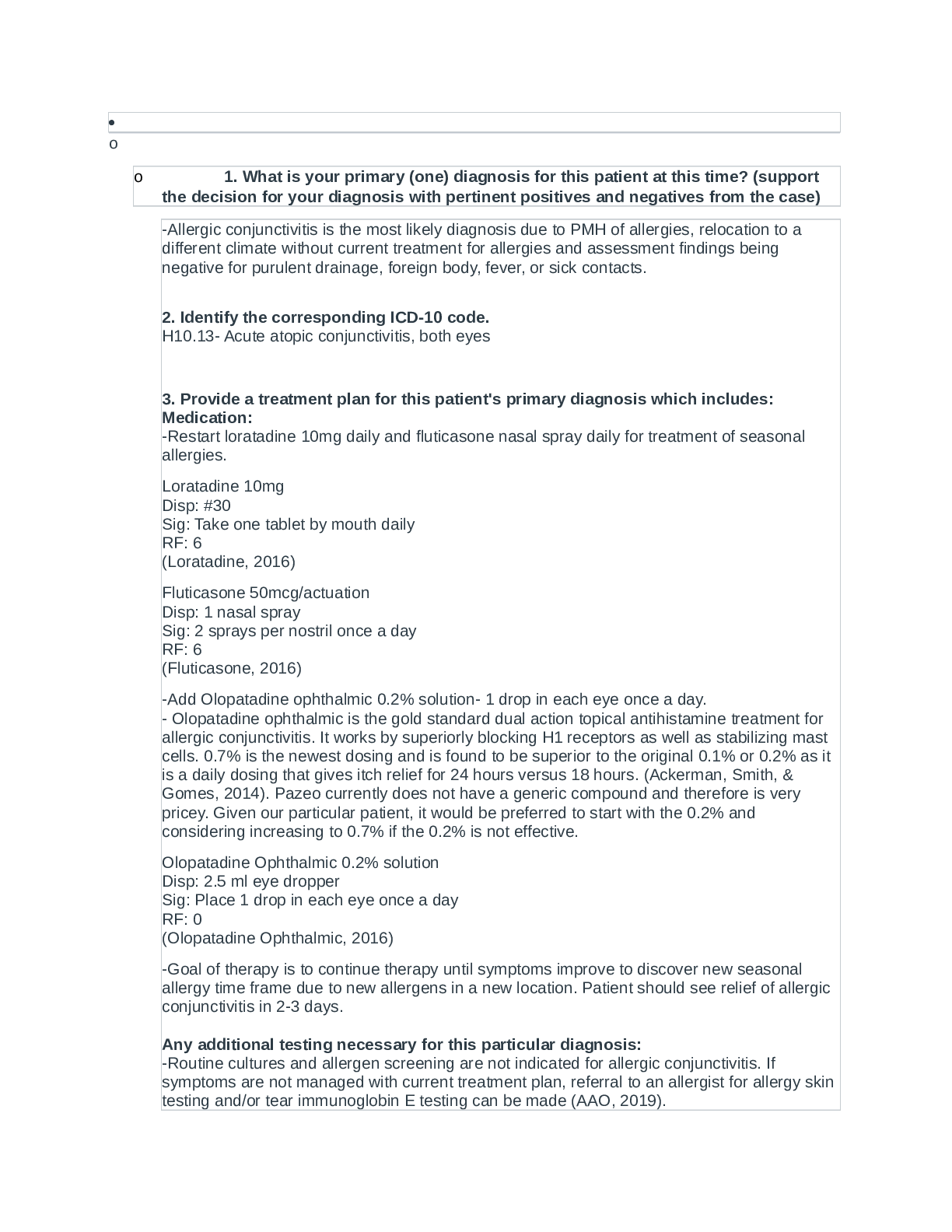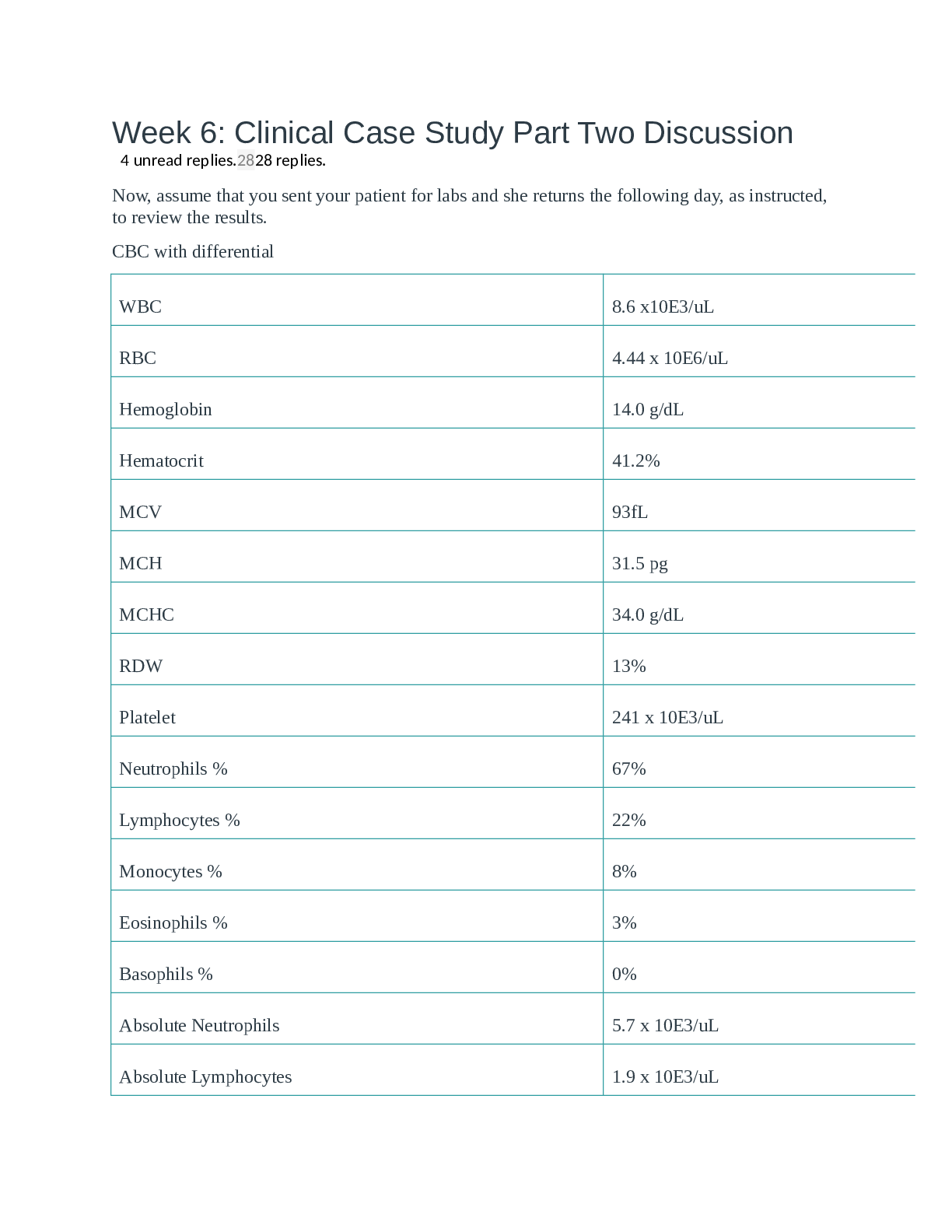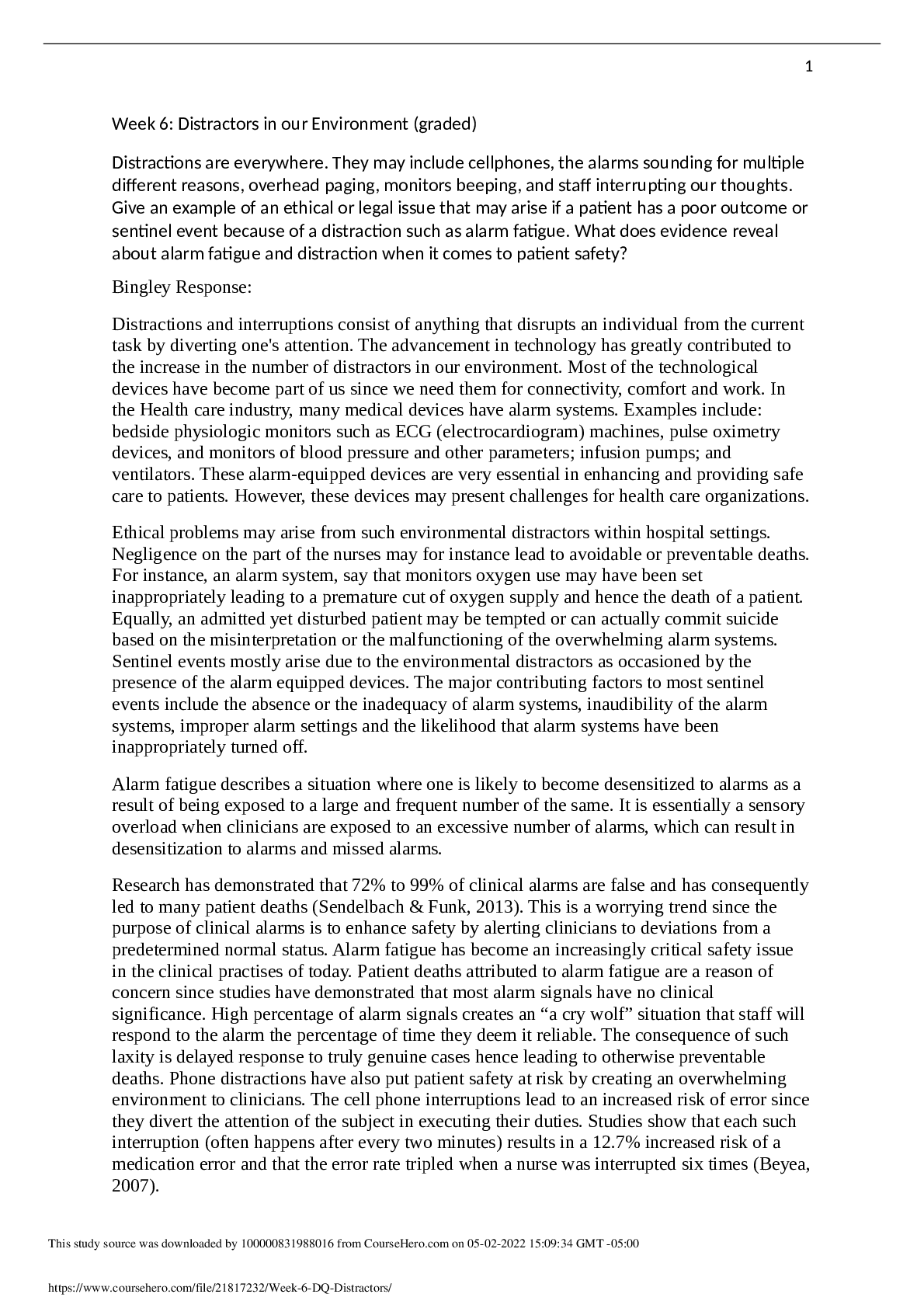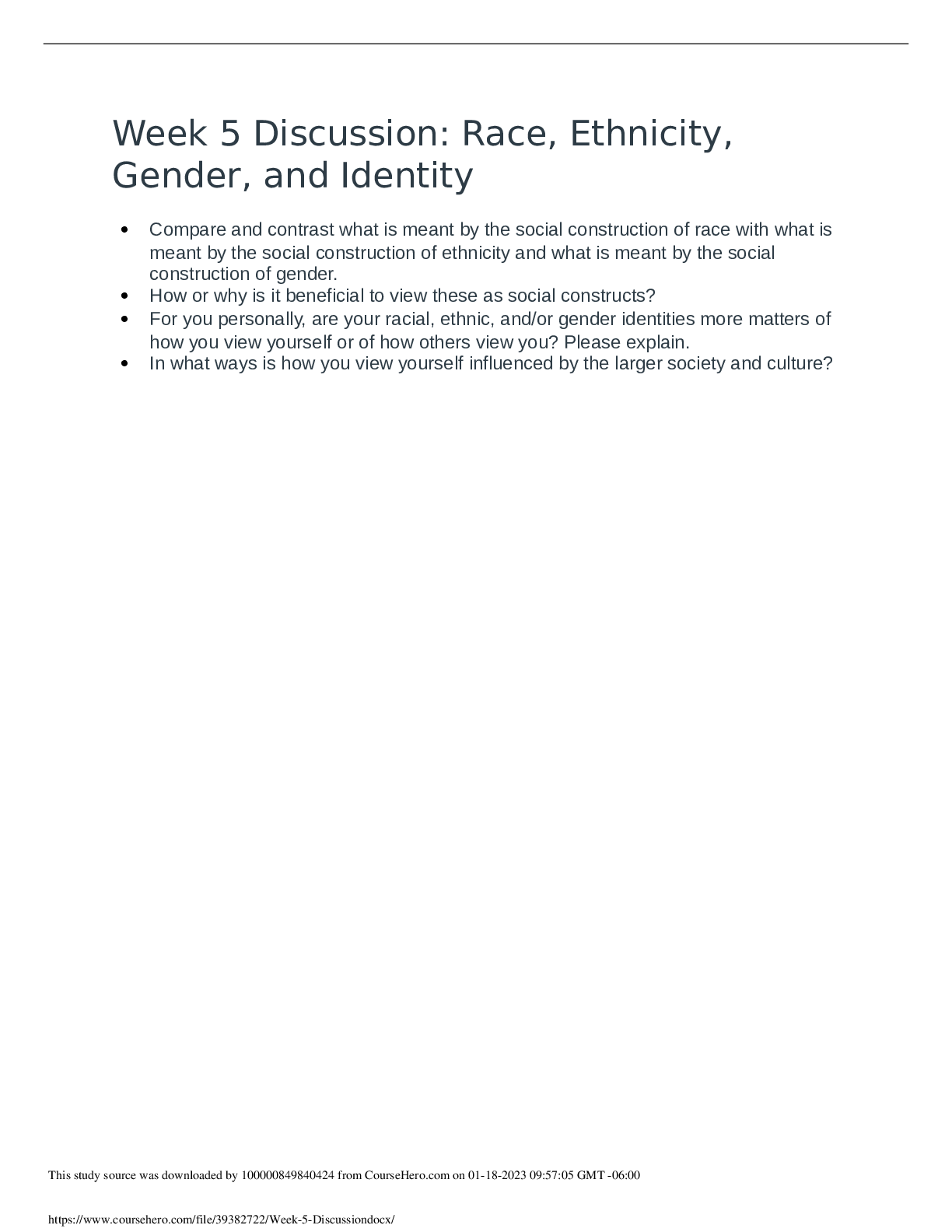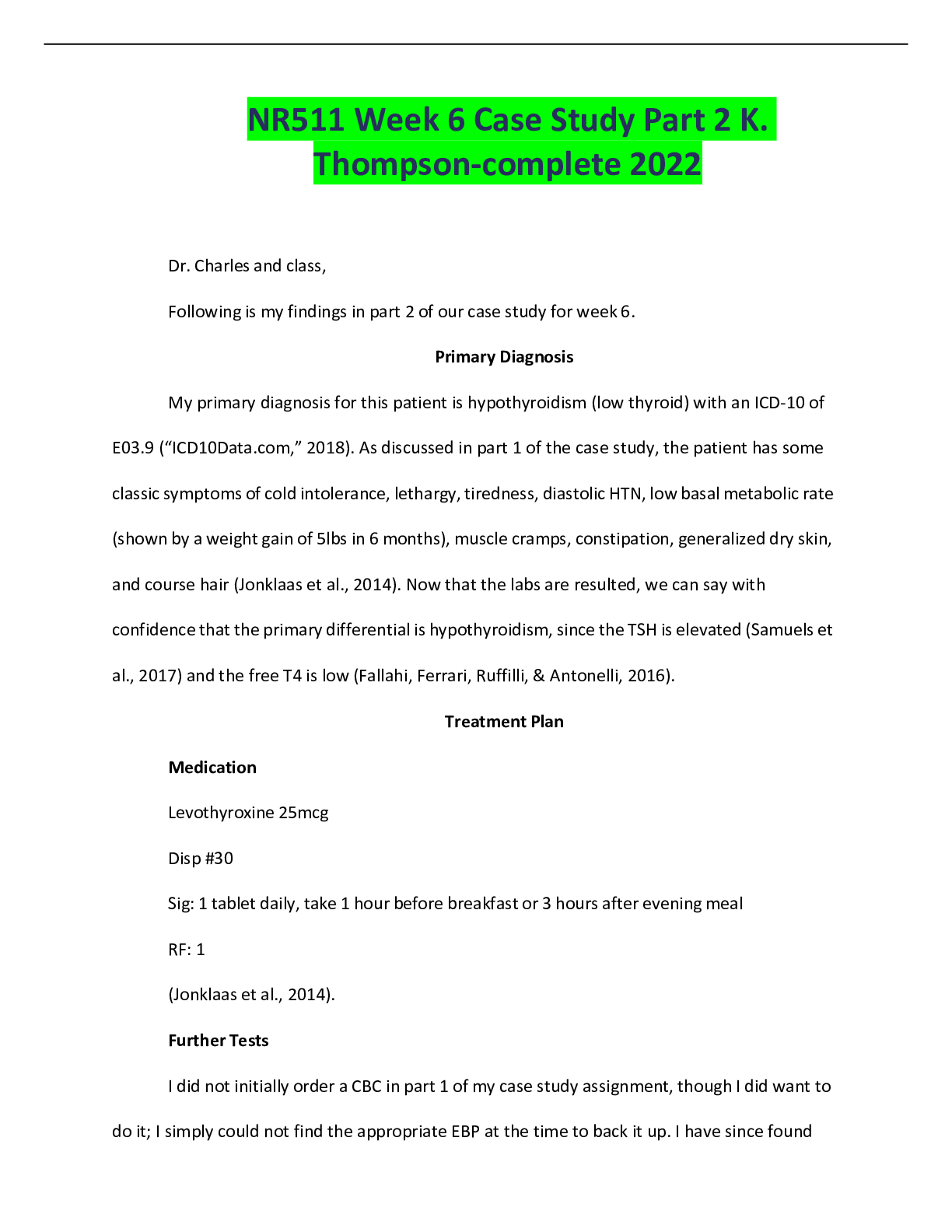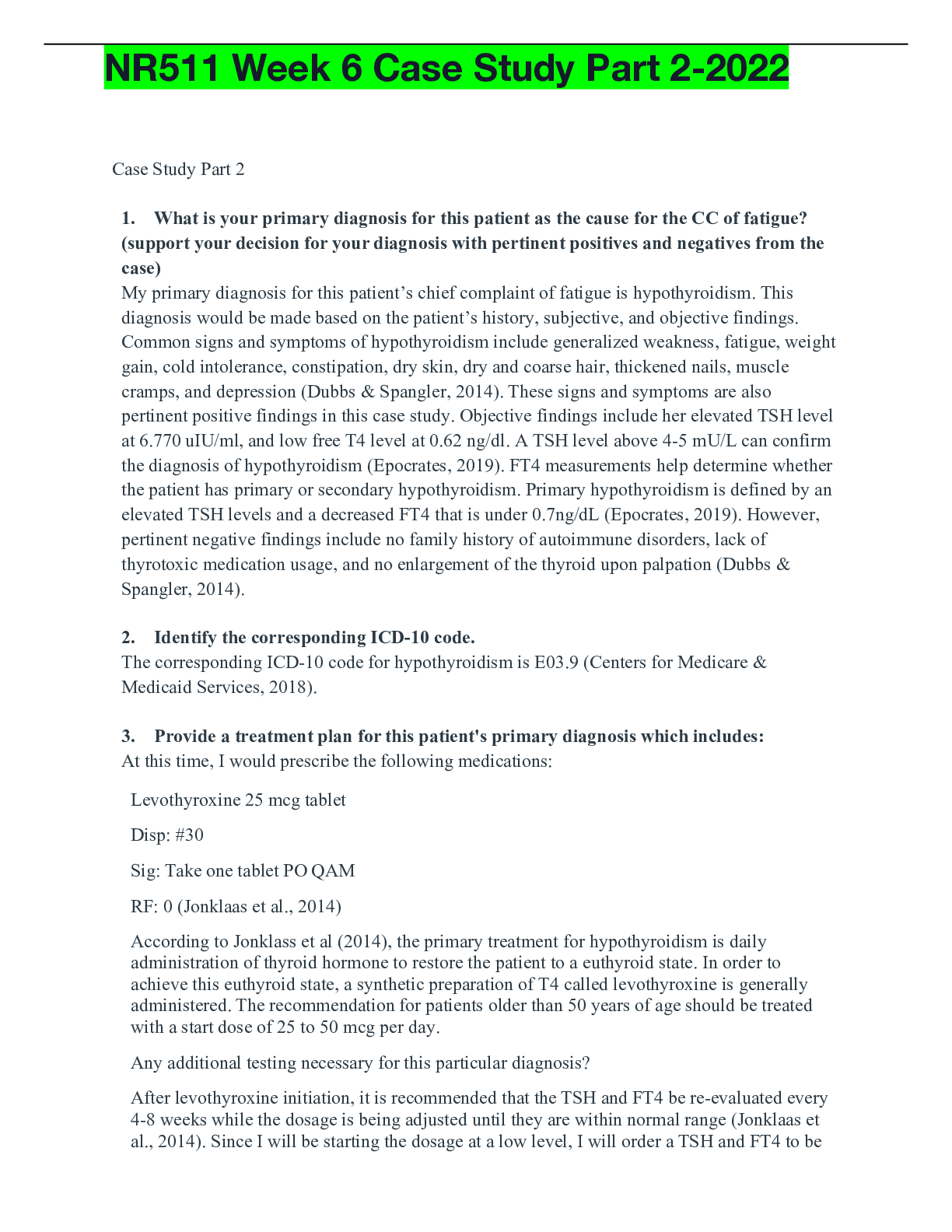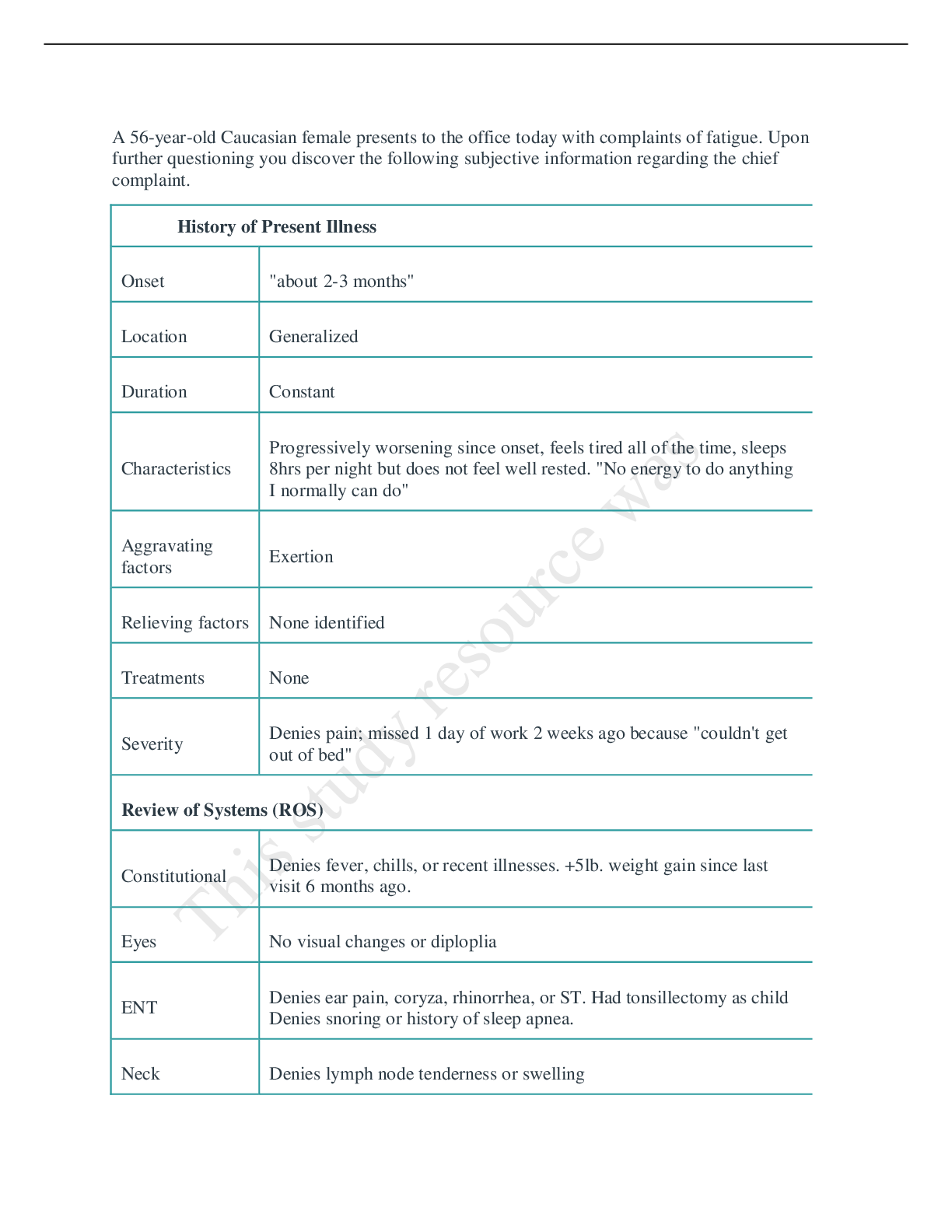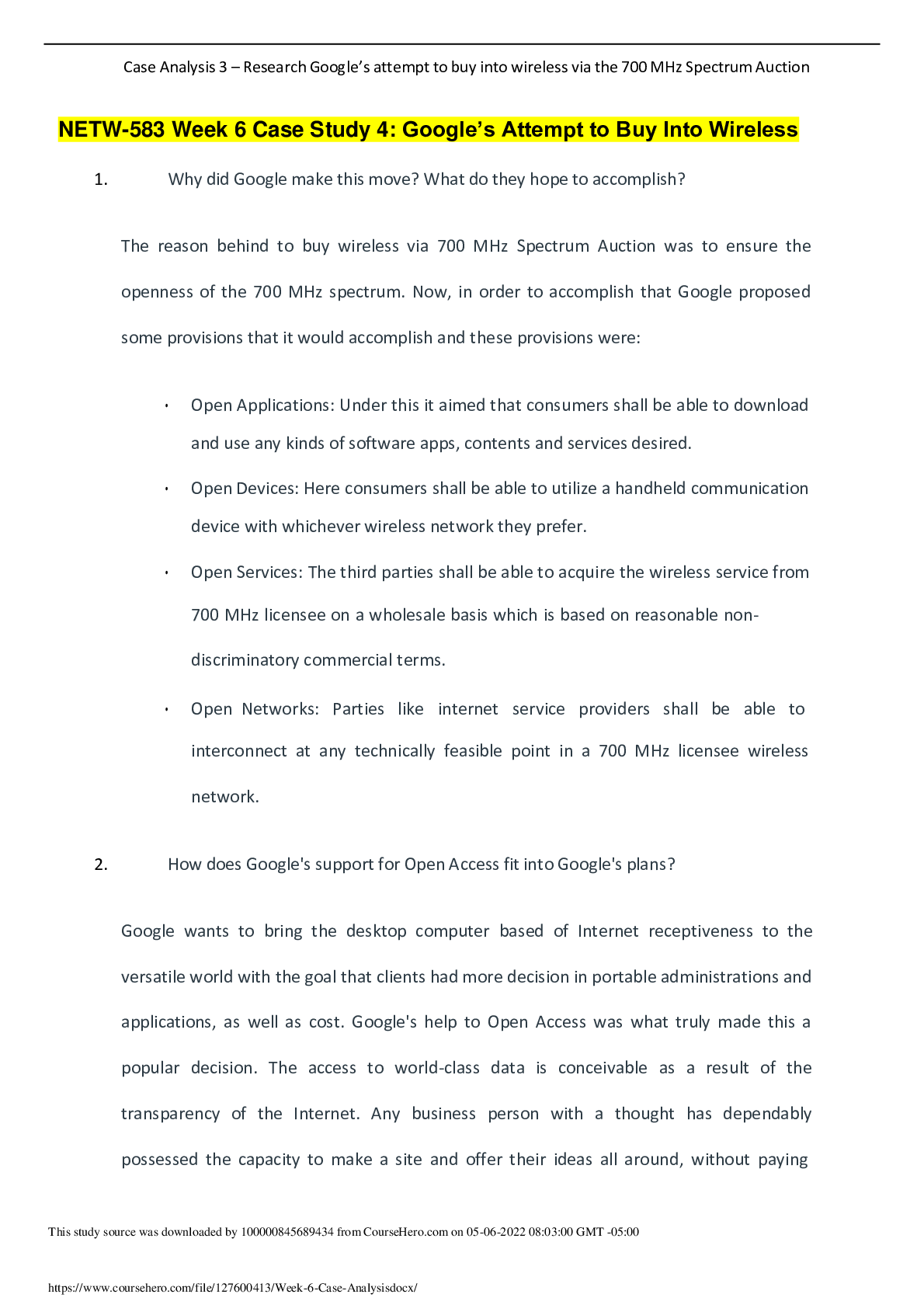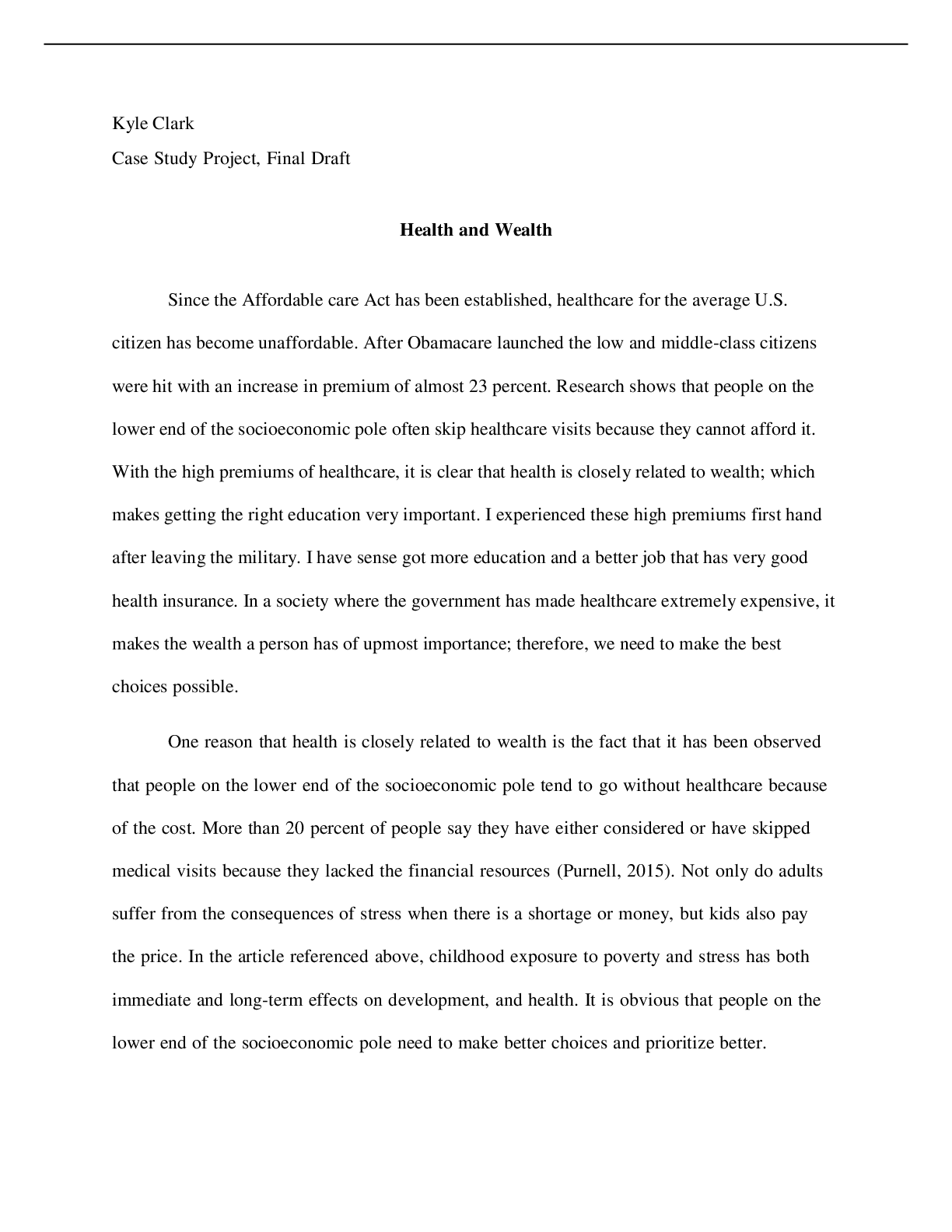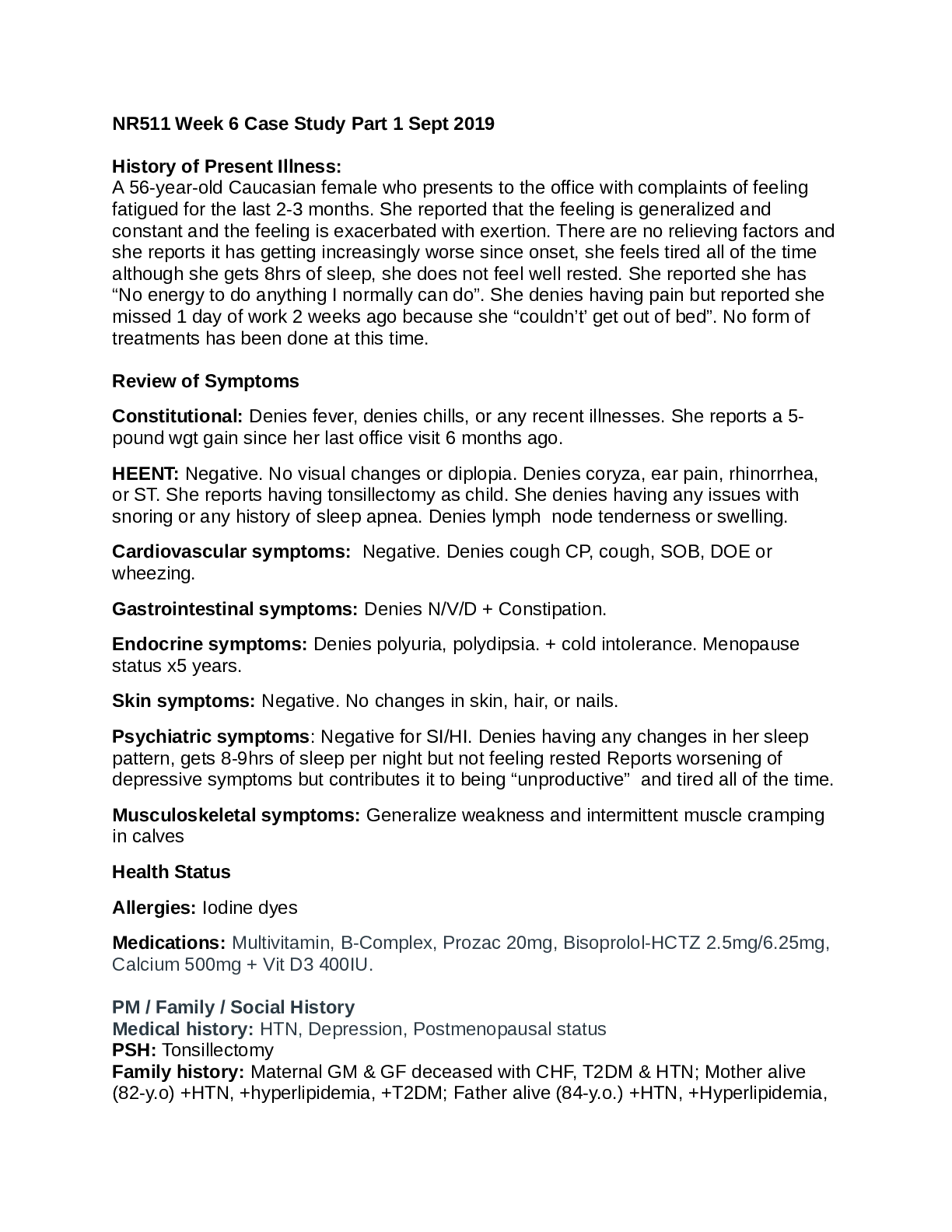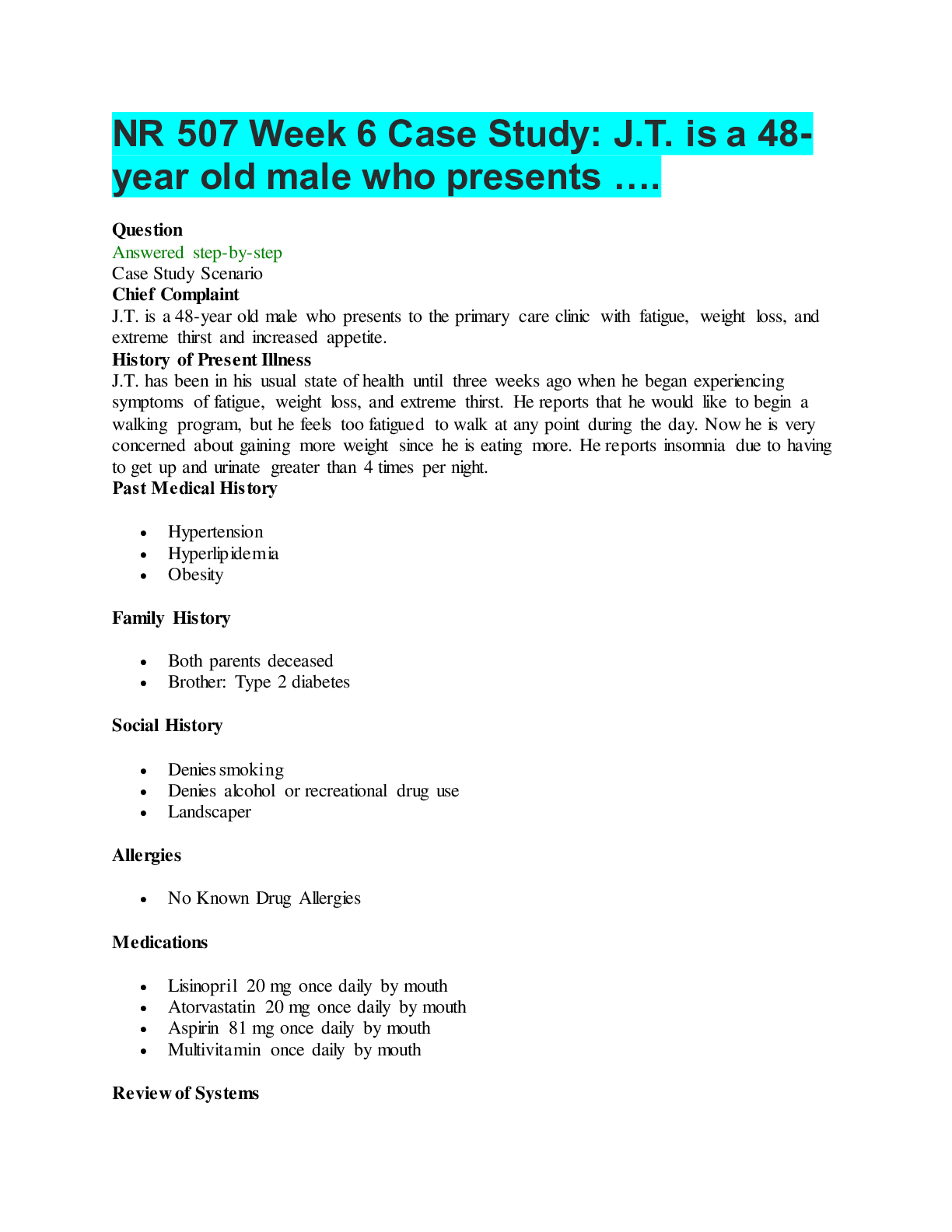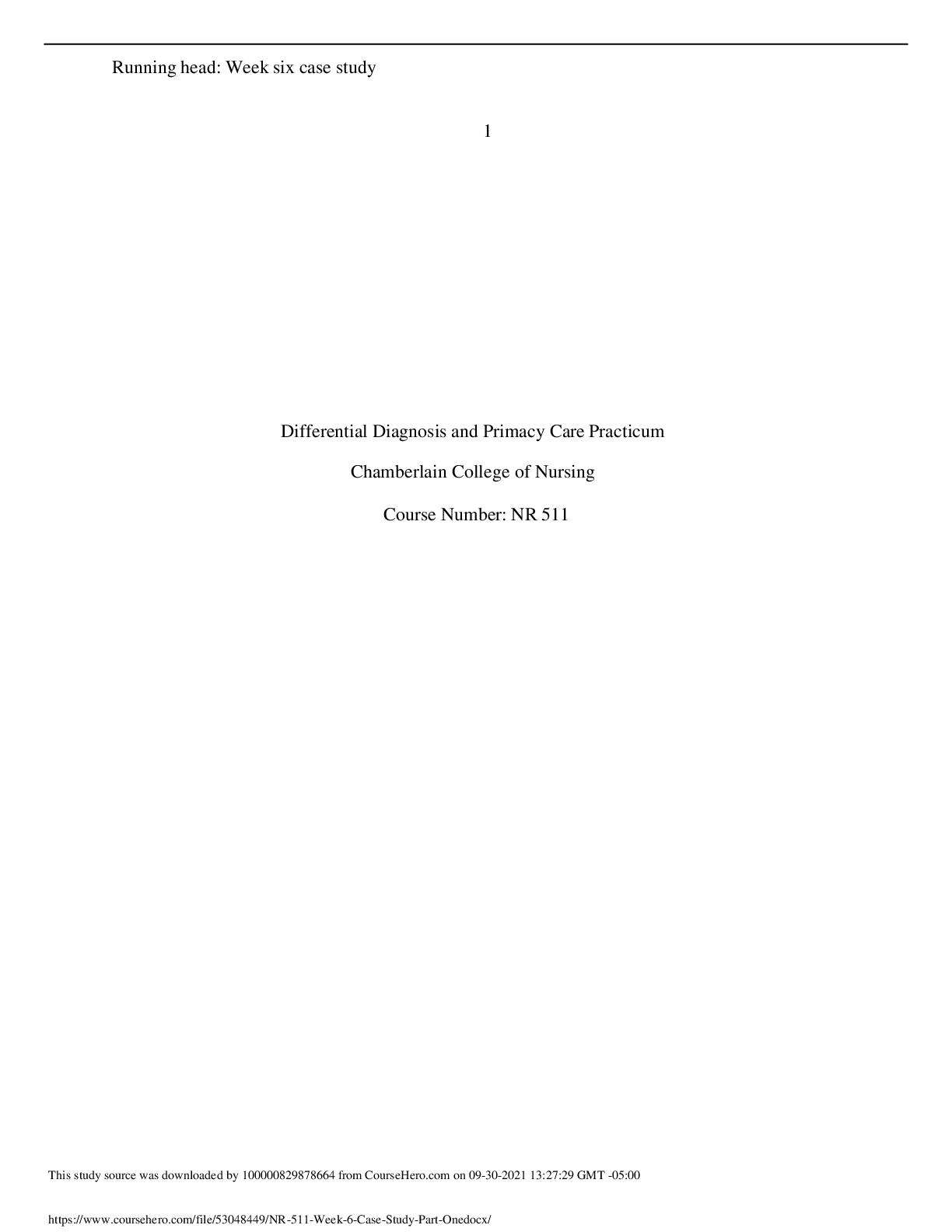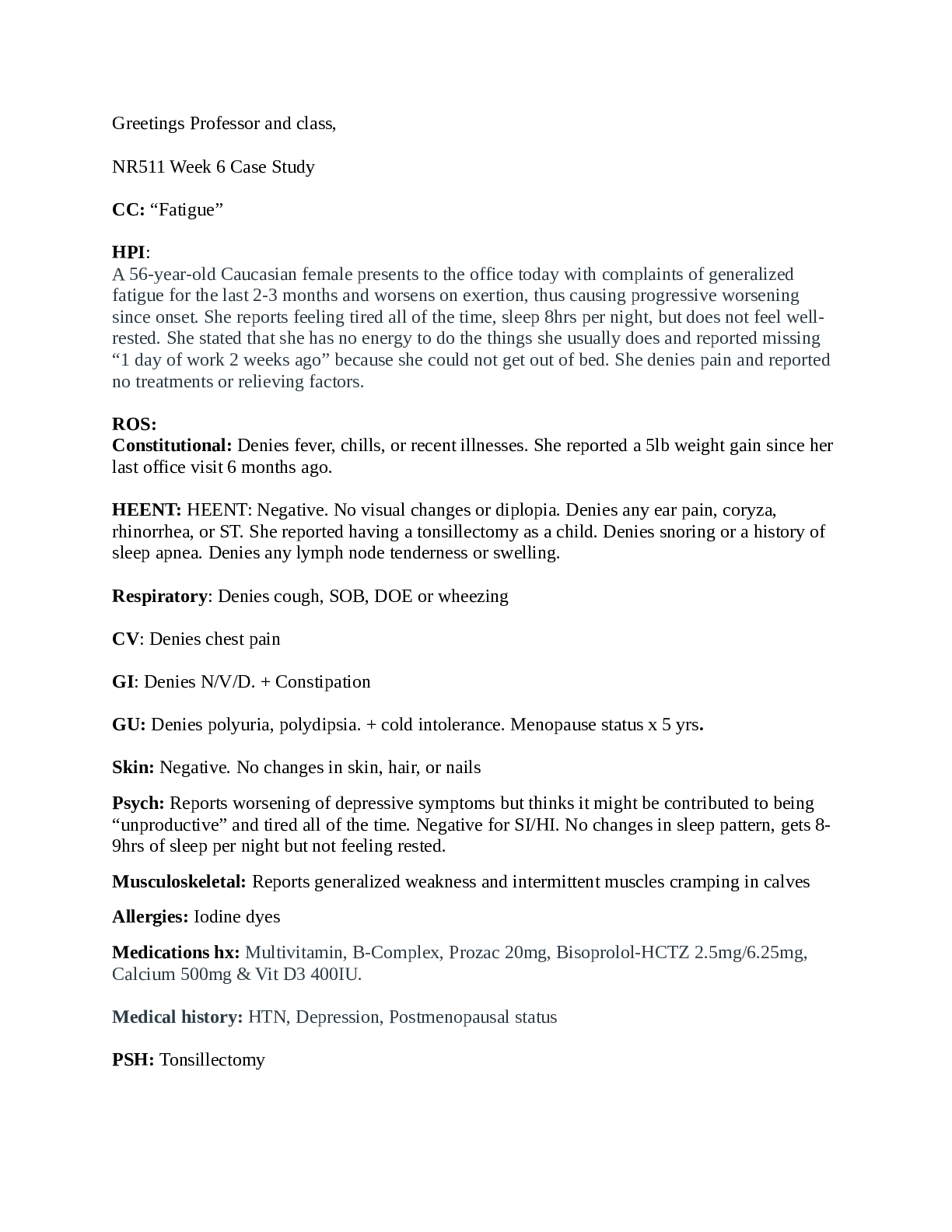*NURSING > CASE STUDY > NR 511 Week 6 Case Study Discussion Part 1 - Chamberlain College (All)
NR 511 Week 6 Case Study Discussion Part 1 - Chamberlain College
Document Content and Description Below
Week 6 Case Study Part 1 Date of visit: November 7, 2017 A 56-year-old Caucasian female presents to the office today with complaints of fatigue. Upon further questioning you discover the following ... subjective information regarding the chief complaint. 1. Briefly and concisely summarize the H&P findings as if you were presenting it to your preceptor using the pertinent facts from the case. Use shorthand where possible and approved medical abbreviations. Avoid redundancy and irrelevant information. 56yo Caucasian female with a hx of HTN and depression that presents with CC of constant generalized fatigue. Reports fatigue started 2-3 months ago and has progressively gotten worse. Reports feeling tired all the time and "no energy to do anything I normally can do". Despite getting 8hrs of sleep per night she does not feel well rested. Fatigue is worse with exertion. Symptoms have been severe enough to cause her to miss 1 day of work because she “couldn’t get out of bed”. Family hx significant for T2DM and heart disease. – Tobacco, + ETOH (wine) occasionally. Takes Multivitamin, B-Complex, Prozac 20mg, Bisoprolol-HCTZ 2.5mg/6.25mg, Calcium 500mg + Vit D3 400IU. Allergic to iodine dyes. Reports 5 lb. weight gain in the past 6 months, + constipation, + cold intolerance, - polyuria, - polydipsia, + depression, - SI/HI, + intermittent BLE cramping, - hair/skin/nail changes, - snoring, - hx of OSA. Physical exam: A/Ox3, NAD. Vitals WNL. Thyroid small, firm, no palpable masses. HEENT unremarkable. CV and Resp WNL. Abdomen unremarkable. Skin dry, hair coarse and thick, nails without abnormality. Strength of extremities 5/5 throughout and DTRs that were 2+ at bilateral biceps, but 1+ at both knees and ankles. 2. Provide a differential diagnosis (minimum of 3) which might explain the patient's chief complaint along with a brief statement of pathophysiology for each. Hypothyroidism o Primary hypothyroidism involves dysfunction of the thyroid gland itself, decreasing its ability to synthesize the thyroid hormone (McCance & Huether, 2014). Secondary hypothyroidism is less common and occurs as a result of pituitary/hypothalamus gland dysfunction (McCance & Huether, 2014). Whether its primary or secondary hypothyroidism, inadequate production of thyroid hormone has the potential to affect all of the major organ systems in the body. Major depressive disorder (MDD) o MDD is a chronic condition that stems from a deficiency of neurotransmitters, such as serotonin, norepinephrine, and acetylcholine, in the brain (Dunphy, Winland-Brown, Porter, & Thomas, 2014). Alterations in these neurotransmitters can result in a wide array of symptoms including general sadness and anhedonia to decreased energy levels/fatigue. This study source was downloaded by 100000831988016 from CourseHero.com on 04-28-2022 09:47:20 GMT -05:00 https://www.coursehero.com/file/45621532/Week-6-Case-Study-Part-1docx/ Obstructive sleep apnea (OSA) o OSA is inadequate ventilation caused by intermittent upper airway occlusion by the soft palate and/or tongue during sleep (McCance & Huether, 2014). Respiratory drive is not affected and when patient is woken from sleep airway patency re-established. These episodes are associated with recurrent oxygen desaturations and arousals from sleep. Short term, OSA can result in excessive sleepiness. If left untreated, the long-term effects can affect cognition and cause cardiovascular changes secondary to increased negative intrathoracic pressure (Dunphy et al., 2014). 3. Analyze the differential by using the pertinent findings from the history and physical to argue for or against a diagnosis. Hypothyroidism o Pertinent +: weakness, fatigue, weight gain, cold intolerance, constipation, dry skin, delayed reaction phase on DTRs, muscle cramps, depression o Pertinent -: - brittle nails, - hair loss or thinning, - enlargement of the thyroid on palpation Major depressive disorder (MDD) o Pertinent +: fatigue, weight gain, depressed mood o Pertinent -: - insomnia, - suicidal/homicidal ideations Obstructive sleep apnea (OSA) o Pertinent +: fatigue, depressed mood, hypertension, feeling unrested o Pertinent -: - excessive sleepiness, - snoring, - disrupted sleep 4. Rank the differential in order of most likely to least likely. Hypothyroidism, Major depressive disorder, Obstructive sleep apnea 5. Identify any additional tests and/or procedures that you feel is necessary or needed to help you narrow your differential. All testing decisions must be supported with an evidence-based medicine (EBM) argument as to why it is necessary or pertinent in this case. If no testing is indicated or needed, you must also support this decision with EBM. Based on my history and physical, I suspect that hypothyroidism is the most likely culprit causing her symptoms. To confirm my diagnosis, I would order blood work that included a TSH and free T4. A TSH is the most sensitive marker for evaluating thyroid function. However, correlating a TSH with a Free T4 will aid in confirming primary hypothyroidism, indicating subclinical disease or detecting secondary causes related to pituitary or hypothalamic dysfunction (Centanni, Benvenga, & Sachmechi, 2017). It is important to explore the depression differential fully, since overlooking this could potentially result in a catastrophic outcome. Evaluating her depression is simple and quick. The Patient Health Questionnaire-9 (PHQ-9) is a quick, non-invasive screening tool that can be This study source was downloaded by 100000831988016 from CourseHero.com on 04-28-2022 09:47:20 GMT -05:00 https://www.coursehero.com/file/45621532/Week-6-Case-Study-Part-1docx/ utilized to evaluate the severity of a patient’s depression (Kom & Reynolds, 2017). It is possible that the patient could have depression related to the symptoms that are caused by her hypothyroidism. In regards to OSA, because it is the least likely diagnosis, I will refrain from ordering additional testing for this at this time. However, if I find that my other diagnoses are ruled out, I will re-visit this diagnosis and order a polysomnography. Polysomnography is the gold standard for diagnosing OSA which is an overnight study that is typically performed in a sleep laboratory (Semelka et al., 2016). However, there is an option for the patient to do their sleep study from the comfort of their own home. A study by Aung (2018) has shown that home respiratory polygraphy (HRP) was equivalent to polysomnography and cost less. References Aung, K. (2018). In suspected OSA, home respiratory polygraphy was noninferior to polysomnography for reducing symptoms. Annals Of Internal Medicine, 168(4), JC20. https://doi-org.chamberlainuniversity.idm.oclc.org/10.7326/ACPJC-2018-168-4-020 Centanni, M., Benvenga, S., & Sachmechi, I. (2017). Diagnosis and management of treatmentrefractory hypothyroidism: An expert consensus report. Journal of Endocrinologist Investigation, 40(12), 1289-1301. doi:10.1007/s40618-017-0706-y. Kom, R., & Reynolds, C. (2017). Management of depression in older adults. JAMA. 2017;317(20):2114–2122. http://doi:10.1001/jama.2017.5706 McCance, K.L., & Huether, S.E. (2014). Pathophysiology: The biologic basis for disease in adults and children (7th ed., pp.1488). St. Louis, MO: Mosby. Semelka, M., Wilson, J., & Floyd, R. (2016). Diagnosis and treatment of obstructive sleep apnea in adults. American Family Physician, 94(5), 355-360. [Show More]
Last updated: 1 year ago
Preview 1 out of 3 pages
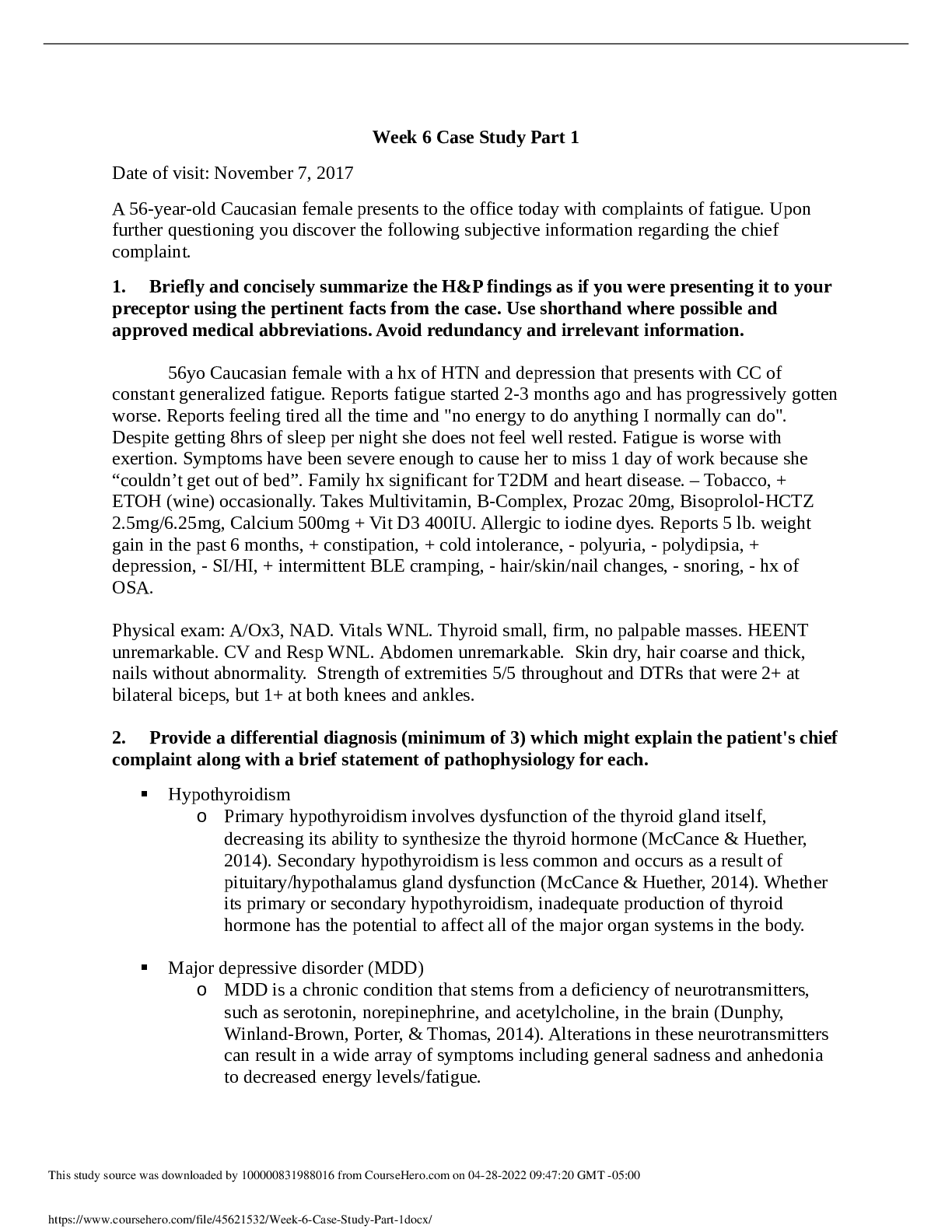
Reviews( 0 )
Document information
Connected school, study & course
About the document
Uploaded On
Apr 28, 2022
Number of pages
3
Written in
Additional information
This document has been written for:
Uploaded
Apr 28, 2022
Downloads
0
Views
49

